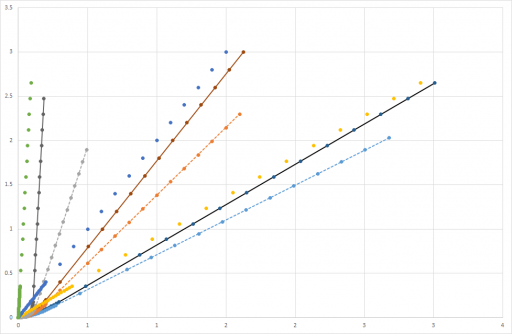jonnyH
Senior Member.
A picture is worth a thousand words, you are going to have to draw me a diagram.I will try to do it when I'll get free time. But it is quite simple actually. Just understand that acceleration is a vector. You split it into direction along rocket propagation and orthogonal one. In the orthogonal direction the speed goes from 0 to cosine of the initial direction angle. For parallel propagation the speed starts from relative speed of rocket and plane (assuming that they are on parallel courses for simplicity). From equation of motion You can see that within 200 us the ratio of distances that shrapnel travels in this two direction will be changing. Meaning that angle will be rotating away from rocket propagation for shrapnel send in slightly forward direction and for shrapnel sent in backward direction the angle will change in opposite direction. As a result after 200 us you will have a spread much narrower than initial 56 degrees
I thought I understood you, but when I put some numbers into excel to calculate the path of the fragments, I got a couple of graphs which seem to indicate that factoring acceleration into the mix has little to no effect on spread.
Figures are displacement in meters (m). The interval between data points is 0.00001 seconds, the three series represent the centre and the front and rear limits of the 56 degree spread from a missile travelling at 750m/s along the x axis from left to right, detonating at the origin.
Attachments
Last edited:

